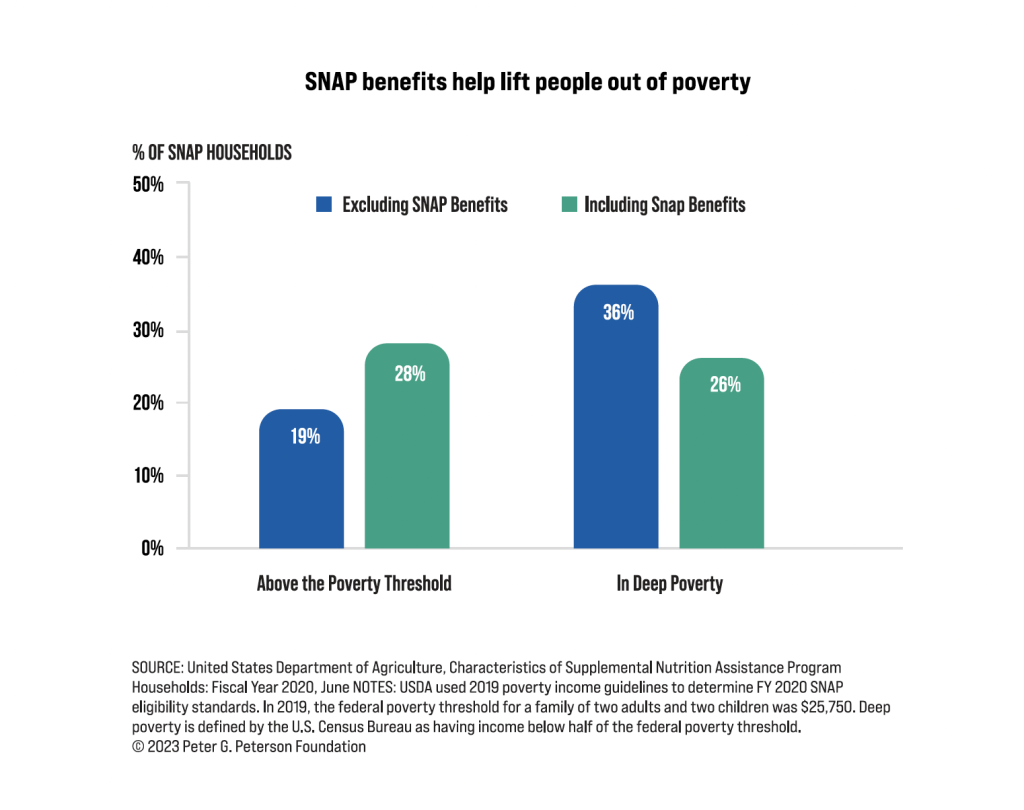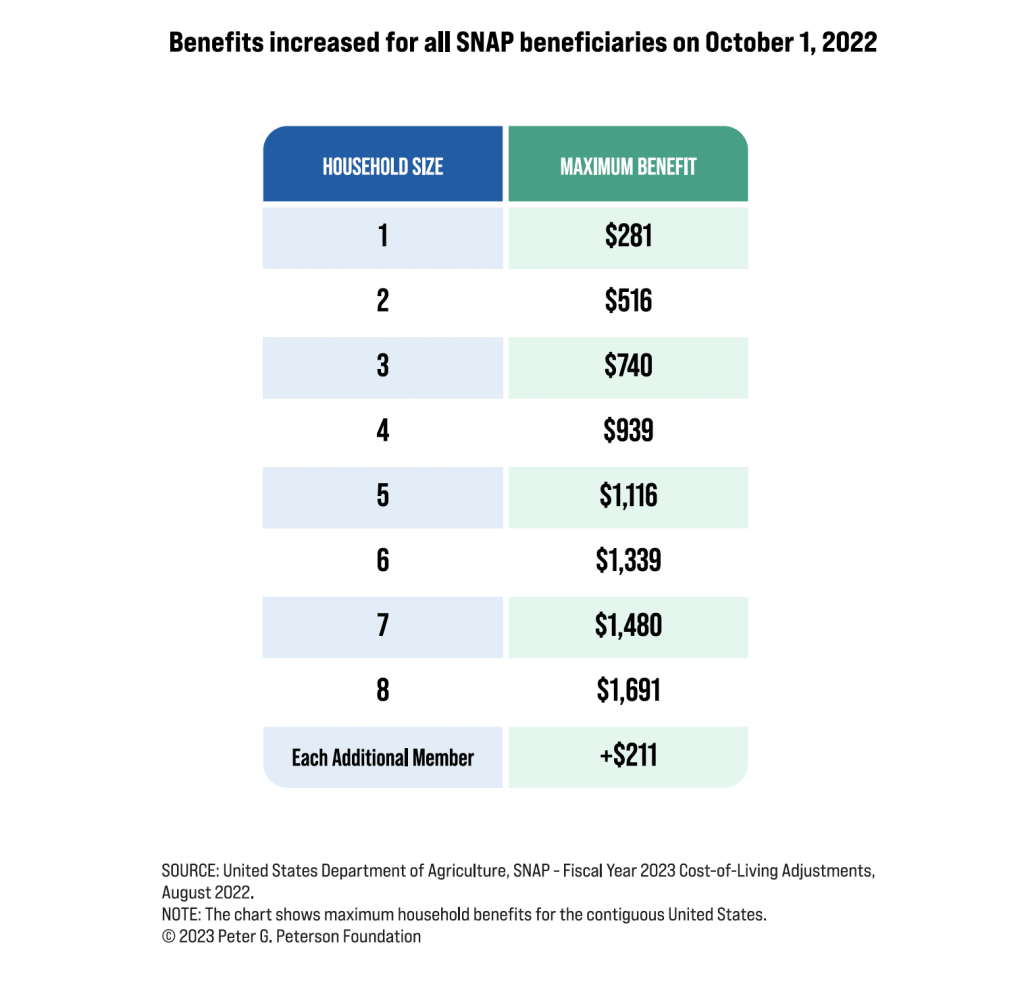Introduction
It is no secret that the cost of food is on the rise. American families today are spending more than ever just to keep food on the table, and grocery costs have reached a level that has seen many facing tough times.

It’s not all doom and gloom, though. The government recognizes that there is a rising need for food assistance, and help is available for those who need it. In fact, food support networks have been around since 1939, when the first grocery assistance program was launched in the wake of the Great Depression and two world wars. [1] And fortunately, it’s easier than ever before to take part.
The program has gone through many iterations over the decades, before undergoing a major reinvention in 2008 and being reborn as the SNAP program that we know of today.
SNAP – The New “Food Stamps”
You’ve probably heard the term “food stamps,” a colloquial phrase used to describe government assistance in purchasing groceries. But have you ever heard of SNAP?
SNAP, or the Supplemental Nutrition Assistance Program, is the food assistance tool used to help Americans the way many of us think of when we think of food stamps. This federal aid program is run jointly by the US Department of Agriculture (USDA) and the Food and Nutrition Service (FNS). But while this is a federal program, aid is most often distributed by offices at the state level, so there can be slight variations on the service state by state.
One of the main benefits of SNAP is not just that it provides help for those facing food insecurity, but also that it is widely available, easy to use, and applies to so many seeking to gain access.
Eligibility of SNAP
So who can apply? Eligibility requirements are pretty straight forward: you must be a resident of a US state and you have to meet certain requirements, like a lower income threshold and work stipulations. [2] These regulations vary depending on what state you reside in, so it is important that you apply through your residency state. To find out more details about the exact numbers required for eligibility where you live, visit www.fns.usda.gov/snap/state-directory
Why Is This Program So Effective?
SNAP is an incredibly helpful tool because of the immense resources put behind it—the government recognizes how necessary this program is to its people, and funds it accordingly. In 2018 alone, SNAP provided support for an estimated 40 million Americans, to the tune of more than $57 billion. And the SNAP program is credited with keeping more than 2 million people out of poverty during the Covid crisis.[3]
In its early years, the program used paper vouchers resembling dollar bills, which is where the name “stamp” was formed. Today, users are given a plastic debit card with funds deposited into an online account each month. They can then purchase products and pay just as if they were using a banking card. The types of products eligible for purchase do have some limitations, however, and the amount of money you are given access to will depend on how many people live in your household. Again, you can go over these exact figures by checking with your specific state.

Foods That Are Available for Purchase Through SNAP
• Produce like fruits and vegetables
• Meat and other proteins like chicken, seafood and beef
• Dairy and eggs
• Breads, cereals and snacks
• Beverages
Additionally, you can use your funds toward creating your own food garden, so seeds and plants also fall under this category.
Items That Are Prohibited
• Alcohol
• Tobacco
• Hot prepared food
• Prescription medicines and over the counter medicines
• Pet foods
While you can purchase plants and seeds to grow your own food, you cannot purchase livestock for slaughter or chicken for raising eggs.
School Lunch
It’s good to note that food assistance extends to school age children in need of a nutritious meal during school hours. An estimated 30 million children benefit from this program, which is called the Child Nutrition Program.
Sources
- [1] R42505 (congress.gov)
- [2] A Quick Guide to SNAP Eligibility and Benefits | Center on Budget and Policy Priorities (cbpp.org)
- [3] Exploring the Role of Equity in SNAP Modernization and Access (rwjf.org)
Introduction
It is no secret that the cost of food is on the rise. American families today are spending more than ever just to keep food on the table, and grocery costs have reached a level that has seen many facing tough times.

It’s not all doom and gloom, though. The government recognizes that there is a rising need for food assistance, and help is available for those who need it. In fact, food support networks have been around since 1939, when the first grocery assistance program was launched in the wake of the Great Depression and two world wars. [1] And fortunately, it’s easier than ever before to take part.
The program has gone through many iterations over the decades, before undergoing a major reinvention in 2008 and being reborn as the SNAP program that we know of today.
SNAP – The New “Food Stamps”
You’ve probably heard the term “food stamps,” a colloquial phrase used to describe government assistance in purchasing groceries. But have you ever heard of SNAP?
SNAP, or the Supplemental Nutrition Assistance Program, is the food assistance tool used to help Americans the way many of us think of when we think of food stamps. This federal aid program is run jointly by the US Department of Agriculture (USDA) and the Food and Nutrition Service (FNS). But while this is a federal program, aid is most often distributed by offices at the state level, so there can be slight variations on the service state by state.
One of the main benefits of SNAP is not just that it provides help for those facing food insecurity, but also that it is widely available, easy to use, and applies to so many seeking to gain access.
Eligibility of SNAP
So who can apply? Eligibility requirements are pretty straight forward: you must be a resident of a US state and you have to meet certain requirements, like a lower income threshold and work stipulations. [2] These regulations vary depending on what state you reside in, so it is important that you apply through your residency state. To find out more details about the exact numbers required for eligibility where you live, visit www.fns.usda.gov/snap/state-directory
Why Is This Program So Effective?
SNAP is an incredibly helpful tool because of the immense resources put behind it—the government recognizes how necessary this program is to its people, and funds it accordingly. In 2018 alone, SNAP provided support for an estimated 40 million Americans, to the tune of more than $57 billion. And the SNAP program is credited with keeping more than 2 million people out of poverty during the Covid crisis.[3]
In its early years, the program used paper vouchers resembling dollar bills, which is where the name “stamp” was formed. Today, users are given a plastic debit card with funds deposited into an online account each month. They can then purchase products and pay just as if they were using a banking card. The types of products eligible for purchase do have some limitations, however, and the amount of money you are given access to will depend on how many people live in your household. Again, you can go over these exact figures by checking with your specific state.

Foods That Are Available for Purchase Through SNAP
• Produce like fruits and vegetables
• Meat and other proteins like chicken, seafood and beef
• Dairy and eggs
• Breads, cereals and snacks
• Beverages
Additionally, you can use your funds toward creating your own food garden, so seeds and plants also fall under this category.
Items That Are Prohibited
• Alcohol
• Tobacco
• Hot prepared food
• Prescription medicines and over the counter medicines
• Pet foods
While you can purchase plants and seeds to grow your own food, you cannot purchase livestock for slaughter or chicken for raising eggs.
School Lunch
It’s good to note that food assistance extends to school age children in need of a nutritious meal during school hours. An estimated 30 million children benefit from this program, which is called the Child Nutrition Program.
Sources
- [1] R42505 (congress.gov)
- [2] A Quick Guide to SNAP Eligibility and Benefits | Center on Budget and Policy Priorities (cbpp.org)
- [3] Exploring the Role of Equity in SNAP Modernization and Access (rwjf.org)




